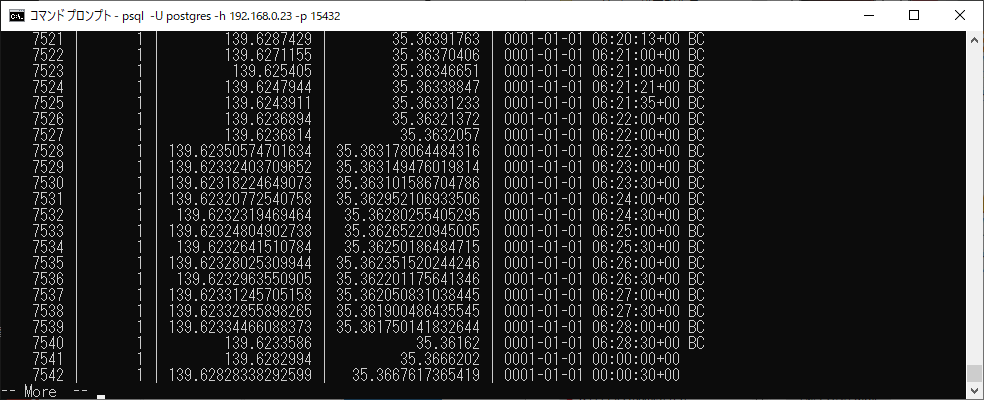米国元大統領(現大統領も含む)は、原則として「謝罪をしない」なぁ、と思います。
I think that former presidents of the United States (including the current president) "do not apologize" as a rule.
『謝罪したら負け』という感じです。
It's like, 'If I apologize, I lose.
実際に、『謝罪したら負け』で『認めたら負け』という、そういう立ち位置の人だから、とも言えます。
They are such a stand-up guy that 'if I apologize, I lose' and 'if I admit it, I lose.
そして、これは米国に根付く国民性である、のようにも見えます。
This situation is a national trait that has taken root in the United States.
しかし、私の所感は違います。
However, my feeling is different.
------
私、20年前で、それもたった2年間の米国滞在でしたけど、『謝罪は負け』というような文化を感じたことはありません。
I was in the U.S. for only two years, 20 years ago, but I have never felt a culture that says 'apology is a loss.
仕事が遅延したり、作っているもの(プログラム等)に問題(バグ)が出れば、普通に『ごめんなさい』と言っていたと思います。
They would usually say "I'm sorry" to me when they delayed their work or if there was a problem (bug) with what they were making (programs, etc.).
もっとも、そういう場面が「なかった」ということだけかもしれませんが。
I may not have encountered such a situation.
ただ、ちょっと違う点があるとすると、私たち日本人チームは、仕事の遅延やバグが出たとき、『相手を責める』という態度で接することはしなかった、ということです。
The only difference is that our Japanese team did not take a "blame the other party" attitude when there were delays or bugs in the work.
『江端(またはチーム)が困っている』(実際に困っていた)という風に接して、「私(たち)を助けて欲しい」という形で接していた点、違うとは思っています。
I think it was different in that I treated them as if they were 'Ebata (or the team) is in trouble' (they were actually in trouble), and I treated them in a way that said, "I want you to help me (us)."
つまり、謝罪をする/しないの違いは、"文化"というより、"立ち位置"または"コミュニケーション"の違いで発生するものではないかなぁ、と思っています ―― 仮説の域を出ませんが。
In other words, I think that the difference between apologizing and not apologizing is not a matter of "culture" but rather a matter of "position" or "communication" - though this is only a hypothesis.
だれか検証してくれるか、あるいは、既往研究を紹介してくれると、私は嬉しいです。
I would be happy if someone could verify this or refer me to a previous study.
-----
比して、日本では、政権与党の党首が、金と政治の問題で、毎日のようにメディアで謝罪しまくっています。
In contrast, in Japan, the leader of the ruling party constantly apologizes in the media for money and politics.
これは、前述とは真逆で『謝罪したら勝ち』という感じです。
This situation is the opposite of those above: 'If I apologize, I win.
で、実際に、我が国では『謝罪したら勝ち』で、『立ち去ったら許される』という文化のようです。
In fact, in our country, the culture seems to be that 'if I apologize, I win' and 'if I walk away, I am forgiven. '
「これは、これで、どうなのかなぁ」という気がしています。
I wonder whether this is correct.
場当たり対応、という形で「謝罪」が使われることが多いような気がするからです。
I feel that "apology" is often used as a superficial response.
-----
例えば ――
For example--
今、メディアで論客をしている人で、過去に服役の経験があった人は、出所当時は「人が変ったかのように、謙虚だった」ように見えたのですが、今は、その姿は影も形もなく、完全に「服役前に戻った」という感じです。
The man who is now a pundit in the media and who had served prison sentences in the past seemed "humble as if a person had changed" after release from prison, but now, there is no shadow of that person, and they are entirely "back to when they were before" they were in jail.
国内裁判で多額の賠償命令をされて、フランスに居所を移した(逃亡?)方は、法律の属地主義を利用して、その賠償を逃れて、今も元気に論客して、お金も稼いでいるようです。
Another man who was ordered to pay a large amount of compensation by a domestic court and moved his residence to France (fled?) seems to have escaped the compensation by taking advantage of the legal territoriality principle and is still active as a public speaker and making money.
(そういえば、米国元大統領は、これまで自分の事業を"5回"倒産させて、多額の負債から逃げたそうです)。
(By the way, a former U.S. president has bankrupted his business "five times" to escape massive debt.)
ちなみに、私、「正義」や「モラル」に対しての感度は低いのですが、「金」に関しては過剰反応します。
Incidentally, I have low sensitivity to "justice" and "morals", but I overreact when it comes to "money".
新党の名称は、やはりこれで決まりでしょう ―― 「新党"脱税"」または「新党"裏金"」
総じて言えることは、「謝罪」は有効な「場当り」対応ではあるのですが、その持続時間は恐しく「短い」ということです。
In general, I can say that "apology" is an effective "on-the-spot" response, but its duration is terribly "short.
-----
私も、自分で何かを主張をする時、基本的に「正義」や「モラル」を出発点としますが、その主張の論拠は「ロジック」と「計算」です。
When I make an argument for something on my own, I take "justice" or "morality" as my starting point, but the argument for that argument is "logic" and "calculation."
もちろん、バックグラウンドには「怒り」や「不愉快」があるのですが、それは前面には出さずに、「ロジック」と「計算」という皮(あるいはインタフェース)を被せて語ります。
Of course, "anger" and "displeasure" are in the background, but I don't put them at the forefront. I argue under the skin (or interface) of "logic" and "calculation.
なぜ、このような迂遠なことをしているかというと、前述の通り、「正義」「モラル」「怒り」「不愉快」は、強烈ではあっても、持続時間が短いからです。
The reason for this detour is that, as noted above, "justice," "morality," "anger," and "displeasure," though intense, are the duration time is short.
比して「ロジック」と「計算」は、インパクトが弱くとも、持続時間が長い(減衰定数が小さい)です。
In comparison, "logic" and "calculation" have a longer duration (smaller decay constant), even if their impact is weaker.
だから、私のコラムやブログでは、「福島原発事故」を、「統一協会」を、そして「上司に言われた理不尽な言葉」を、いつまでも忘れないように、緻密かつ詳細に組み立て上げているのです。
So, in my columns and blogs, I build up the "Fukushima nuclear accident," the "Unification Association," and the "unreasonable words my boss said to me" with such precision and detail that I will never, ever forget them.
―― 少なくとも、この私(江端)だけは、その時の「怒り」を忘れることがないように、と。
"At least, just me (Ebata), so I would not forget the "anger" at that time."
「臥薪嘗胆(*)」とは、ちょっと違うのですが、そのアプローチは同じです。
It differs slightly from "lying in bed(*)," but the approach is the same.
(*)将来の成功を期して苦労に耐えること。薪の上に寝て苦いきもをなめる意から。「臥」はふし寝、「薪」はたきぎ、「嘗」はなめること。「胆」は苦いきも。もとは敗戦の恥をすすぎ仇あだを討とうと、労苦を自身に課して苦労を重ねること。
(*) To endure hardship in anticipation of future success. From the meaning of lying on firewood and licking the bitter taste. Lying on the firewood and licking the bitter taste. The original meaning was to suffer hardship and toil to avenge the shame of defeat.
-----
私も、当然に、謝罪すべき場面では、謝罪をします。
I also naturally apologize in situations where I should.
ただ、私の謝罪の意味と意義は、上記の謝罪とは全く違います。
However, the meaning and significance of my apology are pretty different from those of the above apology.
これについては、これまで、何度もお話してきたので、本日は割愛します。
I have discussed this often, so I will not discuss it today.
訓練されたエンジニア/研究員は、自分が「間違っていること」を前提に行動します。
